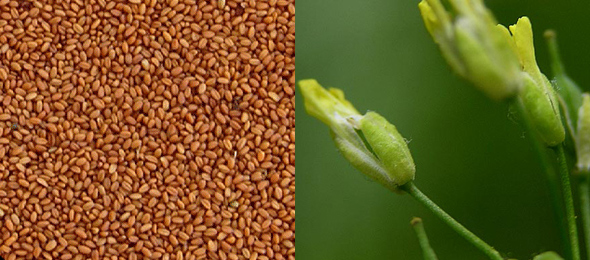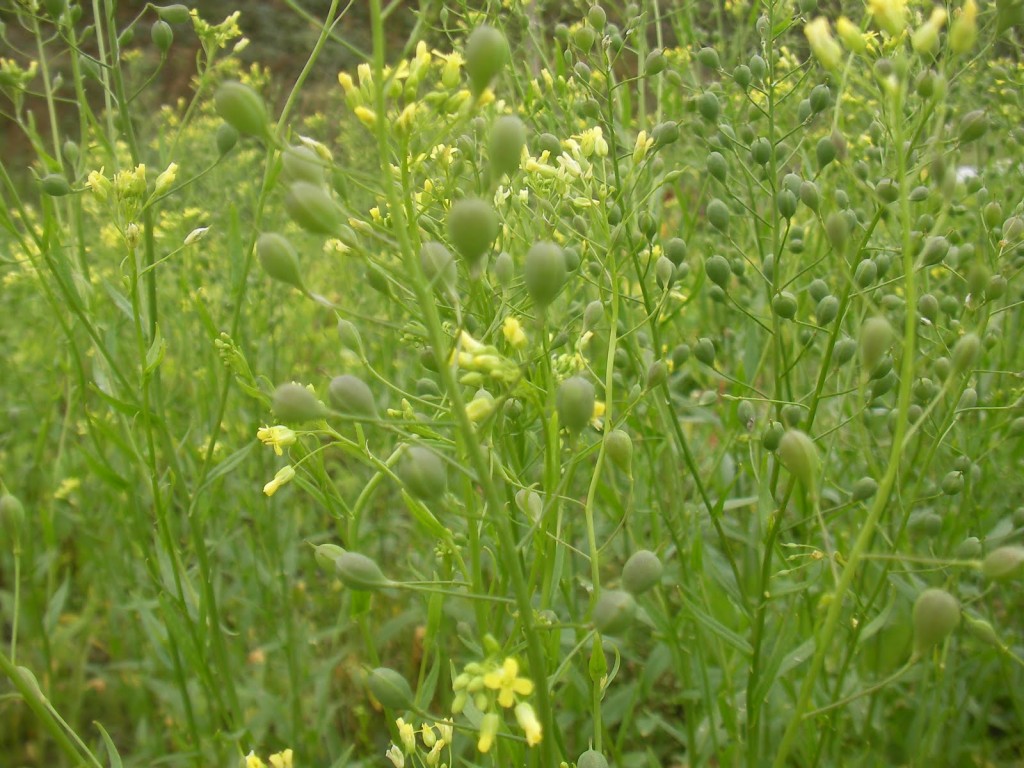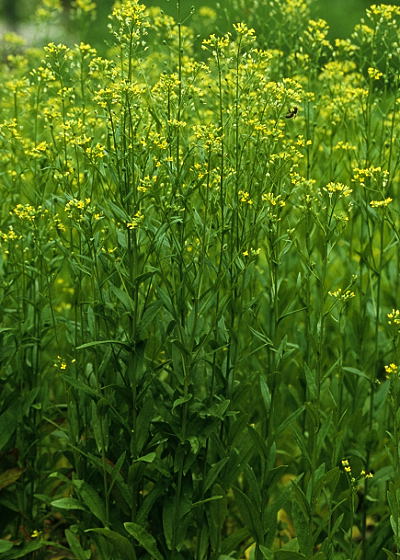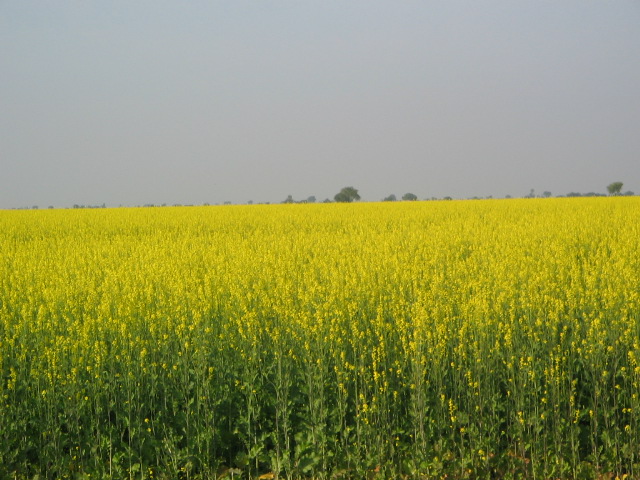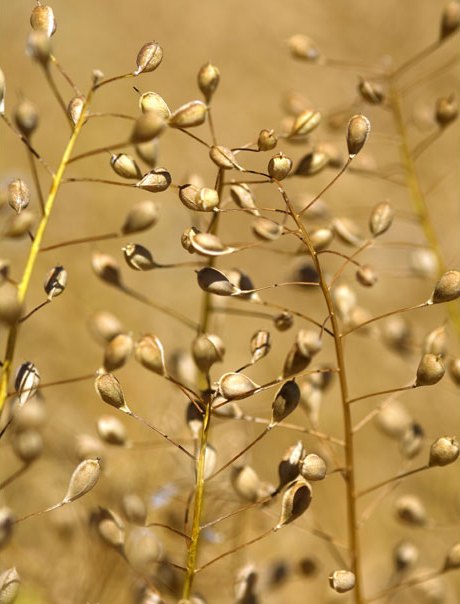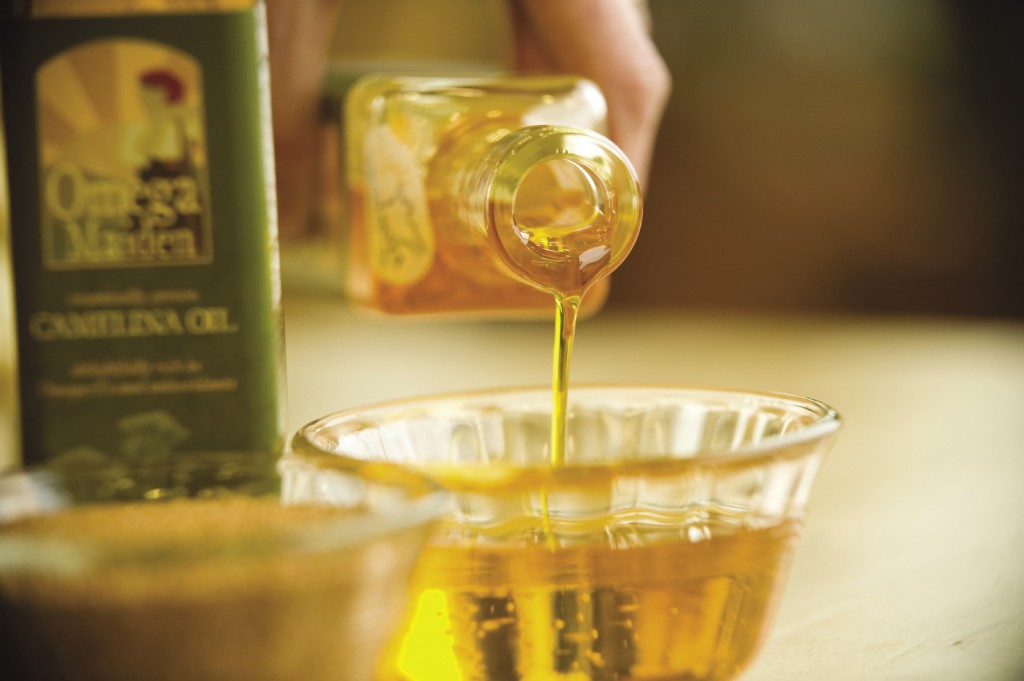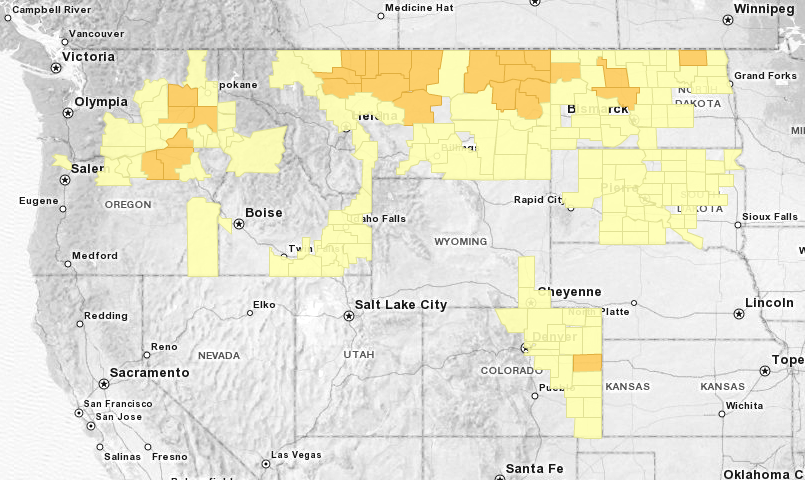Camelina Sativa
Camelina Seed Yields per Hectare/Acre
Data on crop production is still somewhat limited since the USDA did not start data collection until 2007. The average yield was 180-450 Kg per acre/ 445-1112 Kg per hectare. A more recent study at the University of Minnesota puts yields at 600 to 1,700 kg/ha range at Rosemount, Minnesota (45° N latitude), averaging about 1,100 to 1,200 kg/ha over many years of trials.
Camelina typically contains approximately 35% oil, as an example, a tonne (1000 kg) of Camelina will contain 350 kg of oil, of which the press will extract 250 kg. Cold pressing (40C) is required, because high temperatures will damage the antioxidants.
Under dry land conditions in Montana, Camelina yield is 1,800–2,000 pounds of seed per acre in areas with 16–18 inches of precipitation and 900–1,700 pounds per acre with 13–15 inches of rainfall. In Idaho, seed yields of 1,700–2,200 pounds per acre have been reported in the 20–24 inch rainfall area. Under irrigation, seed yields of 2,400 pounds per acre have been reported. Three years of yield data at Moscow, Idaho, show a seed yield potential of 2,100–2,400 pounds per acre with 25 inches of rainfall.
Camelina Plant Description
Camelina is a short-season crop (85–100 days) that is well adapted to production in the temperate climatic zone. It germinates at low temperature, and seedlings are very frost tolerant. No seedling damage has been seen at temperatures as low as 12° F in Montana. The plant performs well under drought stress conditions and may be better suited to low rainfall regions than most other oilseed crops. It should do very well on coarser textured or shallow, droughty soils. The plants grow 12–36 inches tall.
Suitable for: light (sandy), medium (loamy) and heavy (clay) soils, prefers well-drained soil and can grow in nutritionally poor soil. Suitable pH: acid, neutral and basic (alkaline) soils. It can grow in semi-shade (light woodland) or no shade. It prefers dry or moist soil.
Camelina Distribution
Today Camelina is produced in Slovenia, Ukraine, China, Finland, Germany, Austria and Montana.
It can also be grown in Albania, Austria, Belarus, Belgium, Bulgaria, Czech Republic, Denmark, Estonia, Finland, France (including Corsica), Germany, Greece (including Crete), Hungary, Italy, Latvia, Lithuania, Moldova, The Netherlands, Norway, Poland, Romania, Russian Federation, Slovakia, Slovenia, Sweden, Switzerland, Ukraine, United Kingdom (Global Invasive Species Database 2010; USDA, ARS 2011).
Armenia, Azerbaijan, China (Nei Monggol, Xinjiang), Georgia, Kazakhstan, Mongolia, Russian Federation, Turkey (Global Invasive Species Database 2010; USDA, ARS 2011).
Camelina Planting Rates
The practice of broadcasting Camelina seed on frozen ground in late November or early December has been tested over a number of years at Rosemount, and the practice appears to be viable. In one four-year study, crops were sown with standard farm machinery on large plots in late fall on stubble, without seedbed preparation or herbicides, or conventionally in the spring.
The recommended sowing rate ranges from 3 to 7 kg/ha (approximately 250 to 600 seeds/ m2), with the objective of producing a stand density in the range of 125 to 200 plants/m2.
Camelina Harvesting
Harvest of early-planted Camelina typically occurs in July and can be harvested with unmodified combines and may be direct combined standing or swathed.
Viability of Camelina as a Biofuel Crop
Camelina has been approved as a cattle feed supplement in the US, as well as an ingredient (up to 10% of the ration) in broiler chicken feed and laying hen feed which offers an additional revenue stream.
Camelina oil has desirable characteristics as a feedstock for biodiesel. Camelina oil is relatively high in omega-3 fatty acids and low in saturated fatty acids. Consequently, it would appear to have good potential as an edible oil. In addition, the oil contains gamma tocopherol (vitamin E), which acts as an antioxidant and increases the oil’s stability compared to other omega-3 oils. Like canola and other Brassicas (like broccoli, cauliflower, and brussels sprouts), Camelina has sulfur-containing compounds called glucosinolates.
Camelina – Commercial & Companies
Sustainable Oils
Sustainable Oils, Inc. is a producer and marketer of renewable, environmentally clean, and high-value Camelina-based biodiesel fuel. A joint venture between Targeted Growth, Inc., a renewable energy bioscience company, and Green Earth Fuels, a vertically integrated biodiesel energy company, Sustainable Oils is focused on the continued research and development of dedicated energy crops such as Camelina. Sustainable Oils solidly supports both agricultural and green energy initiatives with Camelina, which is efficiently and economically grown on marginal lands, harvested with traditional equipment, and requires minimal water and fertilizer.
Targeted Growth, Inc.
Targeted Growth, Inc. (TGI), an innovator in agricultural yield enhancement technologies, announced the closing of its $10 million private financing from new and existing investors. New investor, Investment Saskatchewan, led the round, with a strong syndicate of new and existing investors also participating including GrowthWorks Canadian Fund Ltd, Integra Ventures, and WRF Capital. This brings the total capital raised to date for TGI to $17.4 million.
Green Earth Fuels, LLC
Kinder Morgan Energy Partners, L.P. (NYSE: KMP) today announced plans to invest up to $100 million to expand its terminal facilities to help serve the growing biodiesel market. KMP has entered into long-term agreements with Green Earth Fuels, LLC to build up to 1.3 million barrels of tankage that will handle approximately 8 million barrels of biodiesel production at KMP's terminals on the Houston Ship Channel, the Port of New Orleans and in New York Harbor. Green Earth Fuels has agreed to build biodiesel production facilities at various KMP terminal sites in these regions and has already begun construction on an 86 million gallon facility at KMP's Galena Park Terminal on the Houston Ship Channel.
David DuByne is a consultant for companies entering Myanmar & agricultural commodities export broker for green coffee, honey, farm raised fish out of Myanmar. He can be reached at ddubyne (at) oilseedcrops [dot] org.

